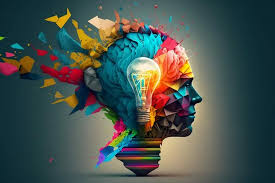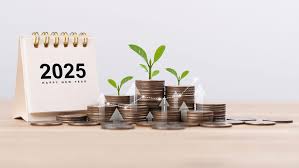
Exploring the Role of Artificial Intelligence in Creative Arts
Artificial Intelligence (AI) has revolutionized industries across the board, and the creative arts are no exception. From generating visual art to composing music, AI is proving to be a transformative tool that expands the boundaries of creativity. While the idea of machines creating art might seem like a futuristic concept, the integration of AI in the arts has already begun, raising important questions about authorship, creativity, and the future of human artists.
In this article, we’ll explore the role of AI in the creative arts, examining how it’s being used, the opportunities it presents, and the challenges it poses to traditional artistic practices.
1. AI as a Tool for Artists: Amplifying Creativity
Rather than replacing human creativity, AI is often seen as a tool that enhances the creative process. Artists are using AI to experiment with new techniques, explore unique concepts, and speed up certain aspects of their work.
How AI is Used in Creative Arts:
- Visual Arts: AI algorithms can generate images, paintings, and even sculptures. Programs like DeepArt, which use neural networks to mimic the styles of famous artists, allow users to create art by simply uploading a photo and choosing an artistic style. This opens up new possibilities for creating art in collaboration with technology.
- Music Composition: AI is also being used to compose original music. Tools like OpenAI’s MuseNet or Jukedeck use machine learning algorithms to create complex musical pieces in various genres. Musicians can collaborate with these tools to create unique soundscapes or to explore new compositions that may not have been possible without AI.
- Writing and Poetry: AI tools, such as GPT-based models, can assist in generating poetry, stories, or even screenplays. Writers can use these models to inspire their writing, overcome writer’s block, or produce experimental pieces that blend human creativity with machine-generated text.
Why It Matters:
By using AI as a creative tool, artists are able to push the boundaries of their craft, discovering new styles, techniques, and ideas. AI helps artists break free from traditional limitations and experiment with new approaches to their work.
2. AI-Generated Art: Creativity Without Human Hands?
One of the most debated aspects of AI in the creative arts is its ability to generate art autonomously, without human intervention. AI-generated art is created by machine learning models that analyze vast amounts of existing art and then produce new pieces based on those patterns.
AI and Visual Art:
AI-generated art has gained significant attention in recent years, with artworks created by AI programs being sold for substantial sums at auction houses like Christie’s. In 2018, a portrait created by the AI algorithm Edmond de Belamy fetched over $432,000, highlighting the growing acceptance and value of AI-generated art.
Programs like DALL·E (created by OpenAI) generate unique images based on text prompts. This allows anyone, even without artistic training, to create detailed and imaginative artworks simply by describing them to an AI system.
AI and Music Composition:
In the music world, AI-generated compositions have already been used for film scores, advertisements, and even entire albums. The possibility of creating a piece of music from scratch using AI raises interesting questions about authorship and originality. Can a composition created by a machine truly be considered art? Who owns the rights to music composed by an AI—does it belong to the developer, the user, or the AI itself?
Why It Matters:
The idea of AI as a creator challenges traditional notions of authorship, ownership, and the human-centric nature of the arts. While some argue that AI art lacks the “soul” or emotional depth of human-created works, others see it as an exciting new frontier in the world of artistic expression.
3. The Intersection of AI and Human Collaboration
Instead of AI replacing human artists, many creatives are finding ways to collaborate with AI to create groundbreaking works. AI can assist in producing art, music, and writing, but it’s still the human artist who brings meaning, intention, and emotion to the work.
AI and Collaborative Art:
- Generative Art: Artists can use AI algorithms to generate visual art, which they can then refine or adapt. For example, an artist might use an AI program to produce the first draft of a painting, then make adjustments or combine elements of different generated pieces to create a unique artwork.
- Interactive Art: AI can be integrated into interactive installations, where the artwork changes in response to audience input or environmental factors. These installations blur the lines between creator and observer, inviting the audience to become part of the creative process.
AI and Music:
Musicians often use AI-generated compositions as a starting point, using machine-generated music as a foundation for further improvisation or arrangement. In this way, AI becomes an assistant that provides inspiration or helps musicians explore new genres, sounds, or structures that might not have occurred to them otherwise.
Why It Matters:
Collaboration with AI allows artists to enhance their creative potential without relinquishing control. By blending human intuition and emotion with the computational power of AI, artists can create unique, hybrid works that push the boundaries of what is possible in the creative world.
4. AI in the Arts: Ethical and Philosophical Questions
As AI continues to play a larger role in the creative process, it raises important ethical and philosophical questions. Some of the most pressing concerns include:
- Authorship and Ownership: When AI generates art or music, who owns the rights? Is it the programmer who developed the AI, the user who prompted the creation, or the AI itself?
- The Role of Human Creativity: If machines can create art, does that diminish the value of human creativity? Can a machine ever truly replicate the depth of human emotion and experience that often informs great art?
- Bias in AI: Since AI learns from existing datasets, it can unintentionally replicate biases found in those datasets. This can lead to AI-generated art that lacks diversity or reinforces harmful stereotypes.
Why It Matters:
As AI continues to influence the creative arts, these ethical considerations must be addressed. The integration of AI into the arts challenges traditional notions of creativity, authorship, and artistic value, forcing both creators and audiences to reconsider what makes art meaningful.
5. The Future of AI in Creative Arts
The future of AI in the creative arts is both exciting and uncertain. While AI has already made a significant impact, it is still in the early stages of its potential. As technology continues to advance, we can expect even more sophisticated AI tools that can create more nuanced, complex, and emotionally resonant works of art.
Emerging Trends:
- AI-Assisted Creativity: The use of AI will likely become more common as a tool to aid in creative processes, such as editing, producing, and refining creative works. AI could serve as a valuable assistant to artists, providing them with new perspectives or helping them streamline certain tasks.
- AI in Personalization: AI could allow for more personalized artistic experiences. For example, algorithms might generate custom art, music, or writing tailored to an individual’s preferences, tastes, or even emotional state.
- AI and Virtual Reality (VR): The combination of AI and VR could open up entirely new creative experiences, from virtual art galleries to immersive storytelling experiences where the audience interacts with the artwork in real-time.
Why It Matters:
The potential for AI to evolve and deepen its role in the creative arts is vast. It’s not about replacing human artists, but rather providing new avenues for collaboration, creativity, and innovation. As AI continues to evolve, it will likely become an integral part of the creative ecosystem, offering tools that enhance and expand the possibilities of artistic expression.
Conclusion: AI as a Catalyst for Creativity, Not a Replacement
AI is redefining the creative process, offering both challenges and opportunities for artists, musicians, writers, and other creatives. Far from replacing human creators, AI is proving to be a valuable collaborator—helping to amplify human imagination, explore new forms of artistic expression, and push the boundaries of what art can be.
The role of AI in the creative arts raises important questions about authorship, ownership, and the nature of creativity itself. As technology advances, we must continue to navigate these questions, exploring how AI can coexist with human creativity in a way that enhances the art world without diminishing its rich, human foundation.
Ultimately, AI in the creative arts opens a new chapter in artistic evolution—one where machines and humans work side by side to create something greater than the sum of their parts.



